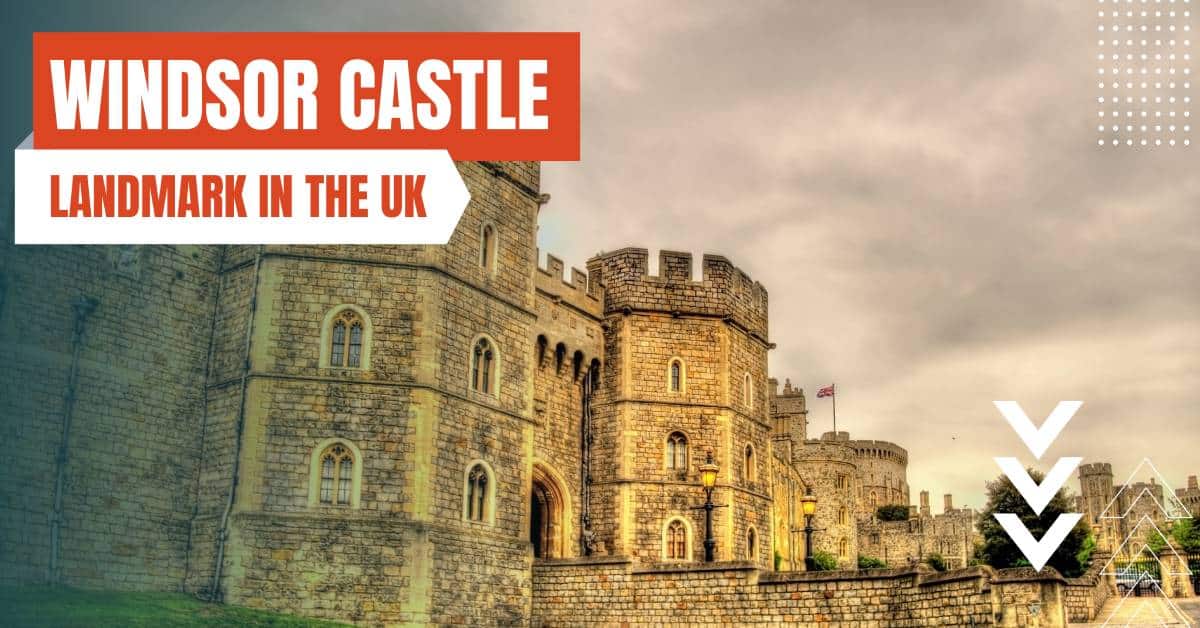All of the products and services we feature are chosen independently. If you click through links we provide, we may earn a commission. Learn more
Written by: Emily Chen
Landmarks in the UK
- Updated: September 30, 2023 | Published:
The United Kingdom, comprising England, Scotland, Wales, and Northern Ireland, boasts a rich tapestry of history, culture, and natural beauty. From ancient castles and grand cathedrals to picturesque landscapes and iconic cityscapes, the UK offers a wealth of awe-inspiring landmarks to explore.
In this article, we delve into the top landmarks that capture the essence of the British Isles. Join us on a journey through time as we unveil the stories behind these remarkable sites and reveal the best times to visit, what to expect, and tips for making the most of your experience.
Whether you’re a history enthusiast, nature lover, or simply a curious traveler, these landmarks promise unforgettable memories and fascinating insights into the United Kingdom’s diverse heritage.
Iconic Landmarks in the United Kingdom
1 .Tower of London, London

- Best Time to Visit: Spring and Fall
- What to Expect: A tour of the castle, Crown Jewels exhibition, White Tower, Yeoman Warder guided tours, and the iconic ravens
- Ideal For: Families, solo travelers, history enthusiasts
- Yearly Visitor Count: Approximately 2.8 million
- Geographical Location: Southeast England, London
The Tower of London, a UNESCO World Heritage Site, is a historic castle and former royal residence situated on the north bank of the River Thames in central London.
Established by William the Conqueror in 1066, the Tower has been a symbol of power and authority for centuries. Visitors can explore the castle’s history through a Yeoman Warder guided tour, marvel at the Crown Jewels exhibition, and learn about medieval weaponry in the White Tower.
Don’t forget to spot the iconic ravens, said to protect the kingdom.
2. Stonehenge, Wiltshire

- Best Time to Visit: Spring and Fall
- What to Expect: The prehistoric monument, visitor center, and guided tours
- Ideal For: Families, solo travelers, history enthusiasts
- Yearly Visitor Count: Approximately 1.6 million
- Geographical Location: Southwest England, Wiltshire
Stonehenge, a UNESCO World Heritage Site, is an enigmatic prehistoric monument dating back to around 2500 BC. Situated in Wiltshire, England, the site comprises large standing stones arranged in a circular pattern, with many theories about its purpose.
Visitors can walk around the monument, visit the visitor center, and participate in guided tours to learn about its history and construction.
3. Edinburgh Castle, Edinburgh

- Best Time to Visit: Spring and Fall
- What to Expect: The historic fortress, guided tours, Scottish Crown Jewels, St. Margaret’s Chapel, and panoramic views of Edinburgh
- Ideal For: Families, solo travelers, history enthusiasts
- Yearly Visitor Count: Approximately 2.2 million
- Geographical Location: Central Scotland, Edinburgh
Edinburgh Castle, perched atop Castle Rock, is a historic fortress and symbol of Scottish history. Explore the castle’s rich history through guided tours, see the Scottish Crown Jewels, and visit the oldest building in Edinburgh, St. Margaret’s Chapel. The castle also offers panoramic views of the city.
Traveling to the UK and need mobile internet? Compare eSIMs for the United Kingdom from over 20+ Prepaid eSIM providers
4. Buckingham Palace, London

- Best Time to Visit: Summer
- What to Expect: The Changing of the Guard, State Rooms, Royal Collection, and garden tours
- Ideal For: Families, solo travelers, royal enthusiasts
- Yearly Visitor Count: Approximately 600,000
- Geographical Location: Southeast England, London
Buckingham Palace, the official residence of the British monarch, is a must-see attraction in London. Visitors can witness the Changing of the Guard, tour the State Rooms, and admire the Royal Collection. Garden tours are also available during the summer months.
5. Big Ben and the Houses of Parliament, London

- Best Time to Visit: Spring and Fall
- What to Expect: Iconic clock tower, guided tours of the Houses of Parliament, and Westminster Abbey
- Ideal For: Families, solo travelers, history enthusiasts
- Yearly Visitor Count: Approximately 1 million
- Geographical Location: Southeast England, London
Big Ben, the famous clock tower, and the Houses of Parliament are among London’s most iconic landmarks. Visitors can take guided tours of the Houses of Parliament and explore the history of British politics. Nearby, Westminster Abbey is also worth a visit.
6. Roman Baths, Bath

- Best Time to Visit: Spring and Fall
- What to Expect: Ancient Roman baths, interactive exhibits, and the Pump Room
- Ideal For: Families, solo travelers, history enthusiasts
- Yearly Visitor Count: Approximately 1.3 million
- Geographical Location: Southwest England, Bath
The Roman Baths, a well-preserved ancient site in the city of Bath, England, offer a glimpse into Roman Britain. Visitors can explore the baths, interactive exhibits, and the Pump Room, which once served as a social hub for Georgian society. The nearby Bath Abbey is also worth exploring.
7. Windsor Castle, Windsor

- Best Time to Visit: Spring and Fall
- What to Expect: State Apartments, St. George’s Chapel, Changing of the Guard, and Queen Mary’s Dolls’ House
- Ideal For: Families, solo travelers, royal enthusiasts
- Yearly Visitor Count: Approximately 1.4 million
- Geographical Location: Southeast England, Berkshire
Windsor Castle, the oldest and largest occupied castle in the world, serves as an official residence of the British monarch. Visitors can tour the opulent State Apartments, witness the Changing of the Guard, and explore St. George’s Chapel, the final resting place of many British monarchs.
8. The British Museum, London

- Best Time to Visit: Spring and Fall
- What to Expect: Extensive collection of art, antiquities, and cultural artifacts from around the world
- Ideal For: Families, solo travelers, art and history enthusiasts
- Yearly Visitor Count: Approximately 6 million
- Geographical Location: Southeast England, London
The British Museum houses an extensive collection of art, antiquities, and cultural artifacts spanning two million years of human history. Highlights include the Rosetta Stone, the Elgin Marbles, and the Egyptian mummies.
9. The Lake District, Cumbria

- Best Time to Visit: Spring and Fall
- What to Expect: Scenic landscapes, outdoor activities, charming villages, and literary connections
- Ideal For: Families, solo travelers, nature lovers
- Yearly Visitor Count: Approximately 19 million
- Geographical Location: Northwest England, Cumbria
The Lake District, a UNESCO World Heritage Site, is a picturesque region of mountains, lakes, and charming villages. Visitors can enjoy outdoor activities such as hiking, boating, and cycling, or explore the area’s literary connections, including the homes of Beatrix Potter and William Wordsworth.
10. York Minster, York

- Best Time to Visit: Spring and Fall
- What to Expect: Gothic cathedral, stained glass windows, and tower tours
- Ideal For: Families, solo travelers, history enthusiasts
- Yearly Visitor Count: Approximately 2 million
- Geographical Location: Northern England, Yorkshire
York Minster, one of the largest Gothic cathedrals in Northern Europe, is renowned for its stunning stained glass windows and intricate architecture. Visitors can explore the cathedral, take a guided tour, and climb the tower for panoramic views of York.
11. Canterbury Cathedral, Canterbury

- Best Time to Visit: Spring and Fall
- What to Expect: Gothic cathedral, guided tours, and the site of Thomas Becket’s martyrdom
- Ideal For: Families, solo travelers, history enthusiasts
- Yearly Visitor Count: Approximately 1 million
- Geographical Location: Southeast England, Kent
Canterbury Cathedral, a UNESCO World Heritage Site, is a symbol of Christianity in England and the site of Archbishop Thomas Becket’s martyrdom in 1170.
Visitors can explore the cathedral’s rich history through guided tours and marvel at its stunning Gothic architecture.
12. The Giant's Causeway, Northern Ireland

- Best Time to Visit: Spring and Fall
- What to Expect: Unique basalt columns, coastal walks, and visitor center
- Ideal For: Families, solo travelers, nature lovers
- Yearly Visitor Count: Approximately 1 million
- Geographical Location: Northern Ireland, County Antrim
The Giant’s Causeway, a UNESCO World Heritage Site, is a unique geological formation on the coast of Northern Ireland, consisting of approximately 40,000 interlocking basalt columns.
These columns are the result of ancient volcanic activity and have inspired local legends of giants building a causeway across the sea. Visitors can walk along the coast, marvel at the unusual rock formations, and learn about the site’s history and legends at the visitor center.
Nearby attractions include the Carrick-a-Rede Rope Bridge and the Old Bushmills Distillery.
By entering your email & signing up, you agree to receive promotional emails on eSIMs and insider tips. You can unsubscribe or withdraw your consent at any time.

About The Author
Related Articles
Spread the Word, Share the Joy
Compare eSIMs
Why keep the secret to yourself? Spread the joy of eSIMradar and let everyone in on the eSIM experience!

Easy eSIM Comparison for Your Needs
Simplifying your search! Easily compare eSIM plans tailored to your specific needs

Coverage in 210+ Countries
Benefit from our extensive eSIM comparison with 30+ providers in over 210 destinations.

Save money without second-guessing
Our platform helps you maximize value, ensuring competitive prices.

Enjoy Hassle-Free Travel Abroad
Whether you’re on holiday or a business trip abroad, stay connected with ease and focus on enjoying your experiences,
Find Your Perfect eSIM & Exclusive Deals!
Find your ideal eSIM effortlessly and stay connected in style wherever your adventures take you! Get exclusive deals and discounts at your fingertips, ensuring you get connected for less on your travels!









